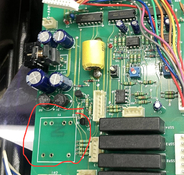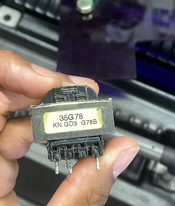Hello everyone, unfortunately I made the stupid mistake and connected the device directly to the socket without stepdown, so the processor got 230V instead of 120V. Everything went well for 20 seconds and then there was a loud bang and it smelled like something was burning. After an electronics technician examined it, it turned out that the transformer was gone and was visibly scorched. Unfortunately, this transformer can no longer be found under the model number.
Can someone show me an alternative?
Alternatively, is it perhaps possible to install a transformer that can handle 230V directly?
** service manual: https://www.silveruser.ca/Manuals/CP31 Service.pdf
Can someone show me an alternative?
Alternatively, is it perhaps possible to install a transformer that can handle 230V directly?
** service manual: https://www.silveruser.ca/Manuals/CP31 Service.pdf















